How to Write Website Copy That Converts: The Ultimate Guide
Understanding the Purpose of Website Copy
Knowing how to write website copy is key to building trust, inspiring action, and turning visitors into clients. Your copy isn’t just text on a screen; it’s your brand’s voice and your first real conversation with your audience. Done well, it introduces who you are, what you offer, and why it matters, all while gently guiding your visitor to take the next step.
Whether they’re discovering your business or looking to improve their site’s performance, your words should do more than inform, they should resonate, connect, and move people to act.
Defining Your Target Audience
Understanding your audience is the first step in learning what web copy is truly meant to do. Without clarity on who you’re speaking to, even the best-crafted words can miss the mark.
To define your target audience, start by creating detailed buyer personas. These are fictional, yet insightful, profiles of your ideal customer, covering things like age, profession, interests, pain points, and goals. Understanding who you're speaking to makes it easier to write copy that resonates and converts.
To shape these personas, begin with thoughtful research:
Surveys and feedback: Ask your existing clients what they love, what they struggle with, and what they’d love to see more of. Real insight comes from real voices.
Analytics insights: Tools like Google Analytics show how people interact with your site, how long they stay, where they click, and what’s working (or not).
Competitor audience: Explore who your competitors are targeting and spot the gaps. That’s your chance to stand out with a message that’s distinctly yours.
Say your website focuses on branding inspiration or covers the essentials of brand development and strategy, your audience is likely to be small business owners or freelancers. They’re looking for clear, actionable advice to improve their online presence. Your copy should lead with confidence, build trust, and position your brand as a go-to guide.
Remember, defining your audience isn’t a one-time task. It’s an ongoing conversation. Revisit your personas regularly, track how things evolve, and keep testing what works, to ensure your copy always hits home.
Crafting a Compelling Value Proposition
A strong value proposition is the foundation of high-performing website copy. It answers one essential question: “Why choose this brand?” With only seconds to make an impression, your value proposition must grab attention and clearly communicate what sets you apart.
To resonate, it needs to be rooted in a deep understanding of your audience, their challenges, goals, and what truly matters to them. This insight comes from real research, whether it’s exploring user behaviour, diving into SEO, or refining your brand strategy.
Instead of listing features, focus on the real-life outcomes your offer delivers. For example, rather than saying “secure payment platform,” highlight what your audience gains: “peace of mind with unmatched payment security.” That’s what builds trust and drives conversions.
Many sites miss the mark by hiding or overcomplicating this message. If visitors can’t see your value instantly, they won’t stick around.
Consider these key components for a compelling value proposition:
Relevance: Demonstrate that the product solves a problem or fulfils a need.
Value: Show how the offering enhances the user’s experience or proposition.
Differentiation: Highlight why your product or service is better than competitors.
Proof Points: Include customer testimonials, ratings, or data to reinforce claims.
Visibility: Ensure it’s positioned where vital decisions are made, such as CTA sections.
A powerful value proposition doesn’t just inform, it invites your audience into something better. And when placed strategically, it becomes one of your website’s most valuable assets.
Struggling to communicate your unique value?
Our Brand Consultancy session helps you clarify your message, align your strategy, and craft a value proposition that connects and converts.
Basics of Persuasive Writing: Words That Sell
When it comes to writing website copy that works, persuasive writing is everything. The right words don’t just fill space; they guide, inspire, and convert. Whether you’re shaping your brand strategy or learning how to drive traffic to your website, it all starts with knowing how to speak directly to your audience’s needs and emotions.
Persuasive copy taps into what really drives action, feelings like curiosity, frustration, or desire. Start by identifying what’s holding your audience back. This signals a disconnect and the solution lies in messaging that offers clarity, reassurance, and a real reason to stay. Emotionally charged language like “Don’t let your competitors leave you behind” or “Achieve the growth your business deserves” speaks directly to that inner drive.
Clarity matters just as much as emotion. In the process of how to write a brand introduction, avoid overcomplicating your message. Simple, relatable words like “trust,” “proven results,” and “guarantee” are powerful because they’re easy to understand, and they build confidence. Pair that with vivid language, an active voice, and strong visual alignment, and your message becomes even more compelling.
Psychology plays a role, too. One key principle? Reciprocity. When you offer something valuable for free, you build trust while showing your value upfront. Scarcity also drives action. Phrases like “Limited spots available” spark urgency and encourage quicker decisions.
And don’t forget: strong copy always ends with a clear call to action. Replace vague prompts like “Click here” with direct, compelling statements like “Start your free trial today” or “Book a consultation today!” Clear words. Clear outcomes. That’s what sells.
Creating Eye-Catching Headlines and Subheadings
Your headlines and subheadings are more than just formatting; they’re your first impression. They help visitors decide, within seconds, whether your content is worth reading or if they should move on. When done right, they don’t just grab attention; they guide your audience, build trust, and lead them deeper into your message.
It all starts with clarity of purpose. Your headline should reflect the core idea the users are searching for and spark curiosity. Strategic keywords play a big role too, not just for SEO, but to catch the eye of someone scrolling quickly through search results.
Subheadings keep your message flowing. They break up dense content, improve readability, and keep visitors moving through the page with ease. To keep them engaging, use action words or pose questions, like “How to Write a Brand Introduction That Stands Out.” They add energy and make your tone feel more approachable. Visually, use bold formatting to make subheadings scannable and easy to follow.
When creativity meets strategy, your headlines and subheadings become powerful tools, not just for attention, but for impact. They turn browsers into readers, and readers into clients.
Structuring Your Content for Maximum Clarity
When it comes to writing web copy that converts, structure isn’t optional, it’s essential. Whether you’re learning how to write an About page for your website or refining your brand strategy, clear content structure helps visitors stay engaged and take action. When structure is lacking, confusion follows.
Divide and Arrange with Purpose
Every high-performing page begins with a thoughtful layout. Headlines draw readers in, just like a strong brand introduction. Subheadings help guide them through your message with ease. Use visual hierarchy, bolded titles, bullet points, and lists, to keep things digestible.
The Power of Sections and Subsections
A well-structured layout makes your web copy easier to follow, and more persuasive. Start by grouping related ideas into clear sections, then break each one into focused, easy-to-digest subsections. There's no set number, what matters is that each part flows naturally and adds value.
For example, if you're writing a service page, you might break it into:
Who It’s For – clearly state who will benefit from this service
What’s Included – outline the key features or deliverables
The Transformation – explain the results or outcomes they can expect
Why It Works – build trust with social proof or expert insights
How to Get Started – guide them toward the next step with a CTA
Each subsection helps your reader stay engaged, understand your offer, and move confidently toward conversion, without overwhelm or confusion.
The Art of Simplifying Language
Clarity builds connection. When writing web copy, use language your audience can instantly understand, not industry jargon or overcomplicated terms. Simplicity doesn’t mean dumbing it down; it means making your message feel approachable, confident, and easy to act on.
Because the clearer your words, the stronger your message, and the more likely your audience is to take action.
Use Visual Breaks
No one enjoys scrolling through a wall of text. Break up your copy with white space, imagery, or icons to create breathing room. Use bullet points to simplify complex ideas and guide the reader through key takeaways. Visual breaks don’t just improve readability; they make your content feel more inviting, focused, and professionally designed.
SEO Copy vs. Brand Copy: Finding the Balance Between Visibility and Voice
When writing for the web, there’s often a perceived trade-off between writing for algorithms and writing for people. SEO copy focuses on helping your site get found, using keywords, metadata, and structure to improve rankings and drive traffic. Brand copy, on the other hand, is about connection, using tone, storytelling, and personality to resonate with your audience and communicate what your brand stands for.
But the most effective web copy doesn’t choose between the two, it blends them.
Search engines are getting smarter. They now prioritise content that’s not just keyword-rich, but genuinely helpful, well-structured, and user-focused. That’s where your brand voice becomes a strategic asset. When your copy sounds like you and answers your audience’s real questions, it becomes more readable, more shareable, and more likely to convert, while still ranking well.
So rather than seeing SEO and brand copy as opposites, think of them as partners. One helps you get found. The other helps you get chosen.
Incorporating SEO Without Sacrificing Quality
Writing impactful web copy means finding the sweet spot between engaging storytelling and smart SEO strategy. Many websites miss this balance, resulting in low traffic. The truth is: you can integrate SEO beautifully without compromising the quality of your content. In fact, it's essential if you want to drive more traffic to your website.
Research with Intent
Strong SEO begins with deep audience insight. To create web copy that resonates and ranks, start by identifying exactly what your ideal clients are searching for. Use keyword tools to uncover meaningful, high-intent phrases, the kind that reflect real needs, not just trending terms. Then, shape your content around those queries in a way that feels natural, helpful, and aligned with your brand.
Avoid Keyword Overload
It’s tempting to overuse keywords, especially when trying to rank for competitive phrases. But forced repetition can do more harm than good. Instead, weave them in subtly, in headings, introductory lines. Relevance should always serve the reader first.
Prioritise Engaging Structure
Clear structure isn’t just good design, it’s a smart strategy. A well-organised layout makes your content easier to digest, keeps readers engaged, and strengthens your SEO. Use bold headings to guide attention, bullet points to simplify key ideas, and smooth transitions to maintain flow from one section to the next.
“SEO isn’t about ‘HOW do I get keywords into Google?’ It’s about understanding how many people search for information—and finding a way to show up in front of them.”
— Danny Sullivan, SEO Specialist
Optimise for Experience
Ultimately, SEO should enhance, not hinder, the user journey. Use keywords to support clarity, not clutter your message. Remember, the real goal of great web copy isn’t just visibility, it’s connection, trust, and conversion.
Strengthen Relevance with Smart Blog Interlinking
Interlinking is one of the simplest, yet most overlooked, ways to improve your website’s SEO and user experience. Thoughtfully linking between your blog posts keeps visitors engaged longer, reduces bounce rates, and helps search engines understand the structure and relevance of your content.
But it’s not just about SEO. Interlinking is also about creating a guided experience for your reader. When someone lands on a post about how to write a brand introduction, linking them to related insights like what is web copy adds value and builds trust. You’re showing them exactly where to go next, without them having to search for it.
When done with intention, internal links become part of your storytelling, helping you position your brand as the go-to source while naturally boosting your authority in search results.
Want copy that ranks and resonates?
Our expert SEO copywriters craft content that tells your story, connects with your audience, and performs in search.
Let’s optimise your message
Using Social Proof to Build Trust
When someone lands on your website, their first question is often: “Can I trust this brand?” Web copy plays a huge role in answering that, and one of the most powerful trust-builders is social proof. Whether you're learning how to write an About page for your website or looking for branding inspiration, well-placed social proof can turn hesitation into confidence.
Social proof comes in many forms, testimonials, reviews, logos, certifications, and even numbers, all designed to show that others have walked this path before and had a great experience.
Customer testimonials and reviews offer real-world validation of your brand’s value. Whether featured on your homepage or within product descriptions, they help humanise your brand and reinforce the results you promise. Case studies go deeper, telling the story behind a transformation, aligning perfectly with your brand development strategy and driving trust even further.
Visual cues like badges, certifications, and “as seen in” media logos also signal credibility at a glance. A “Trusted By” section featuring client logos or press mentions helps visitors feel they’re in safe hands.
Even numbers speak volumes, think “Over 5,000 happy clients” or “Rated 4.9/5 by 982 users”. These small details can make a big difference in reassuring first-time visitors and guiding them toward action.
Don’t overlook user-generated content either, images, videos, and social media posts featuring real clients using your service bring your brand to life. It shows people what it’s like to work with you, builds relatability, and deepens the emotional connection.
From social proof to SEO, everything works better when built on trust. When people see others vouching for your brand, they’re far more likely to say “yes.”
Creating CTAs That Convert: How to Turn Clicks into Meaningful Action
Imagine landing on a website where every button feels like a dead end. That’s often the case when calls-to-action (CTAs) lack clarity, confidence, or relevance. But when done well, CTAs have the power to transform passive scrolling into purposeful action, whether it’s boosting conversions, improving SEO, or building a stronger brand presence.
An effective CTA starts with intent. Ask yourself: What action do I want visitors to take, and why should they care? If your goal is to drive more traffic to your website, guide users with prompts like “Boost your online visibility today” or “Explore everything you need to know about SEO in one click.” Clear, benefit-led language builds trust and makes the next step feel easy.
Great CTAs also use strong, actionable verbs. Words like “Download,” “Get Started,” or “Claim Your Free Trial” feel achievable and energising. Pair them with your brand’s tone and personality. For example, a CTA that reads “Explore the essentials of brand development and strategy” sounds authoritative, aligned, and filled with value.
Placement matters. Position CTAs where users are already engaged. On an About page, where trust is being built, a softer invitation like “Let’s start your branding journey” can encourage action without overwhelming the reader.
And don’t forget about the visual side. Your CTA should stand out without clashing. Use bold colours, consistent fonts, and thoughtful spacing to make buttons easy to spot, all without disrupting your overall design.
At the heart of it all, CTAs don’t need to shout. They just need to speak to the right need, at the right moment, with confidence, clarity, and relevance.
Why Mobile-Optimised Web Copy Matters More Than Ever
Your web copy’s impact depends not just on what you say, but how it’s experienced, especially on mobile. With the majority of web traffic now coming from smartphones, failing to optimise for mobile isn’t just a design flaw; it’s a crucial mistake. If your goal is to drive traffic to your website, mobile functionality must be at the forefront of your strategy.
It all starts with responsive design. A thoughtfully crafted brand introduction should look just as compelling on a small screen as it does on a desktop. The essentials of brand development and strategy mean your content needs to appear polished and professional, wherever your audience finds you.
Navigation is just as crucial. What works on a desktop can overwhelm on mobile. Keep menus intuitive and collapsible, and ensure interactive elements like buttons are large enough to tap comfortably. Whether you're guiding users through your About page or your services, seamless navigation builds trust and improves engagement.
Mobile optimisation is more than technical; it’s about putting your user first. Clean layouts, fast loading times, and concise, keyword-rich CTAs support both usability and visibility.
When your copy is designed with mobile in mind, it becomes a smooth, intuitive part of your brand experience, one that guides users clearly and confidently toward action.
Testing and Iterating: Analysing Performance
Great web copy isn’t set in stone; it evolves. Once your content is live, the real magic happens through testing, analysing, and refining. Whether you’re just learning what web copy is or refining your existing content, performance insights are essential for ongoing growth.
Start with the data. Tools like Google Analytics and heatmaps can show you how users actually interact with your site. Are they scrolling? Clicking? Or dropping off too soon? For example, if your post isn’t getting the attention it deserves, high bounce rates or low time-on-page might signal the need for stronger messaging or clearer structure.
Next, explore A/B testing. Try variations of key elements, headlines, CTAs, even button colours, to see what truly resonates. These experiments often reveal underlying issues, like low engagement or unclear direction, which are also common signs your website isn’t working for you. Small tweaks can lead to meaningful results.
If you're applying everything you need to know about SEO, track your keyword rankings, traffic sources, and engagement levels closely.
Finally, optimisation isn’t just about metrics, it’s about alignment. As you gather feedback, revisit your brand voice, messaging, and value proposition. Refining your brand introduction with real-world insights ensures it continues to connect with your audience while staying true to your identity.
Copy that converts is never static. It’s strategic, responsive, and always improving.
Final Tips on Writing Copy That Converts
Crafting copy that truly converts is both a strategy and an art. It's about blending well-chosen keywords with authentic storytelling, guiding your audience from curiosity to action. When you understand what web copy is, you can write with intention, clarity, and confidence. Here’s how to make every word count:
1. Start with Research
Effective copy begins with empathy. Understand what your audience truly wants, their challenges, goals, and motivations. Whether you're offering branding inspiration or mapping out the essentials of brand development and strategy, base your messaging on real insights from surveys, analytics, or client conversations.
2. Keep It Simple, Yet Persuasive
Clarity converts. Avoid jargon and aim for language that’s easy to digest but emotionally resonant. Speak directly to the transformation you offer, whether it’s helping someone identify why your website isn’t working or providing everything you need to know about SEO. Testimonials, proof points, and benefit-led copy go a long way in building trust.
3. Optimise for SEO, Naturally
SEO doesn’t have to compromise your tone. Instead, it should elevate visibility. Use relevant keywords, link to internal resources, and structure your content with both users and search engines in mind. Being discoverable is the first step to converting.
4. Use Strong, Clear CTAs
Your CTA is where intention meets action. Make it specific, benefit-driven, and aligned with your audience’s goals. Whether guiding them to purchase, sign up, or learn how to write an About page for your website, the CTA should feel like a natural next step, not an afterthought.
5. Test, Refine, Repeat
Conversion-focused copy is never static. Use data to learn what’s working, from heatmaps to A/B testing, and refine accordingly. Whether you're tweaking a brand introduction or iterating on messaging, consistency in voice and clarity in purpose are key to lasting impact.
Great web copy isn’t just about sounding good, it’s about helping your audience feel seen, understood, and empowered to take the next step. When your words guide with purpose, conversions follow.
Ready to turn your words into results?
Whether you're building a new site or refreshing your current one, our expert copywriters are here to craft clear, compelling content that connects and converts.
Let’s bring your brand voice to life.
FAQs
-
Website copy refers to the written content on your site, from your homepage headlines to service descriptions and calls to action. It's essential because it communicates your brand’s value, builds trust, and guides your visitors toward meaningful action.
-
Start with research. Understand your audience, define your value proposition, and map out your core pages. Then structure your content clearly, use persuasive language, and optimise it for both readability and SEO.
-
There’s no magic number; focus on relevance, not repetition. Choose a main keyword (your main target) and a few related phrases, and incorporate them naturally into your headings, body copy, and meta descriptions.
-
A great headline is clear, compelling, and aligned with user intent. It should include relevant keywords, spark curiosity, and reflect the benefit or outcome your visitor cares about.
-
Yes. Mobile-friendly copy is concise, easy to scan, and well-structured. Use short paragraphs, bullet points, and bolded headings to enhance clarity and guide users through your message on smaller screens.
-
Review your website copy at least once a year, or more frequently if your offerings evolve. Regular updates improve SEO performance and keep your brand messaging current and relevant
-
If you’re confident in your brand voice and copywriting skills, go for it! But if you're unsure how to write web copy that converts, working with a professional ensures your message is strategic, polished, and aligned with your business goals.
















